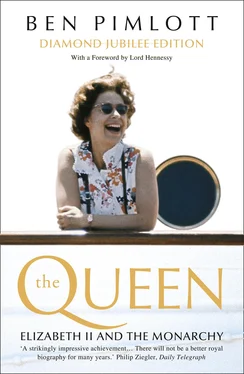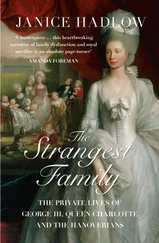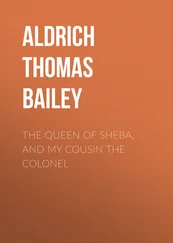Other pursuits also involved opportunities not available to most compatriots. In October 1942, Princess Elizabeth made her contribution to the royal larder by shooting her first stag in the hills at Balmoral – using a rifle she had been taught to handle the previous year. 31In the autumn of 1943, she hunted with the Garth Foxhounds, and later with the Duke of Beaufort’s Hounds in Gloucestershire. 32The decision to allow her to go hunting was taken, according to a report, ‘in accord with the general policy of making her life as “normal” as possible’ in the light of her position as Heiress Presumptive. 33
There were also private entertainments. The King, despite his shyness, was a good dancer, and especially enjoyed dancing in the company of his children. He did not allow the war to curtail this particular pastime. A number of royal balls were held. Princess Elizabeth attended her first at Windsor in July 1941, when she was fifteen. A West End dance band played foxtrots, waltzes and rumbas to the Royal Family and their guests, who included Guards officers, until two in the morning, and Elizabeth danced several times with her father. 34Later in the war, before the start of flying bombs in 1944, dances were held fortnightly in the Bow Room on the ground floor at Buckingham Palace. On one occasion the King, oblivious to cares of state, his stammer forgotten, led his family and other guests in a conga line through the corridors and state rooms. 35
FOR MAXIMUM BENEFIT to the war effort, the privacy of the Royal Family needed to be less than complete. If life at Windsor and Buckingham Palace had been simply private, its exemplary virtues could scarcely have been known to loyal subjects. For this reason, as The Times observed just after the end of the war, ‘many glimpses’ of the Royal Family’s home life had ‘reached a wide public, through illustrated journals and the cinema’. 36One avid supplier to the illustrated journals, and propagator of royal mythology, was the photographer Lisa Sheridan who, by her own testimony, never failed to come away from a professional visit to the Royal Family without feeling a better person. Her recollections of the princesses in wartime are interesting not only because her pictures of wagging puppy tails, happy children and proud parents became fixed in the Empire’s imagination, but also because she provides a distillation of the ‘family of families’ miasma in its purest form.
In her memoirs, Mrs Sheridan described several wartime trips to see the princesses. Her account of the first, to Royal Lodge in early 1940, reflected the official line of the phoney war period, that the enemy had done little to change the traditional British way of life. The windows ‘showed no signs of criss-cross sticky tape or nasty black-out’. The princesses were intent on their normal recreations. When she arrived, they were dressed for riding and carried crops; they changed into ‘sensible’ tweed skirts and pullovers, in order to be photographed in the garden, suitably equipped with rakes and barrows, digging for victory. The overriding impression, however, was of the Windsors as a household anyone would like to be part of. Apart from the King and Queen and a policeman at the gate, nobody else was visible. ‘I never felt the presence of anyone at all other than the family,’ she recalled. It was clear ‘that home was to the Royal Family the source of life itself and that there was a determination on the part of the King and Queen to maintain a simple, united family life, whatever calls there might be to duty’. Later visits reinforced this picture of self-containment, though the background shifted from the unchanging domesticity of Royal Lodge to the warlike ramparts of the Castle. Here there were parables of life and death: the demise of a pet chameleon, for example (‘Princess Elizabeth could not bring herself to speak of her tiny pet for quite a long time after his death’) and, even more painfully, the death of a favourite corgi. The Queen, however, as always comforting and wise, told her elder daughter to keep things in proportion. It was, after all, the height of a world war. 37
Sheridan’s photographs, disseminated among dusty desert rats, weary Bevin boys, homesick land girls and traumatized evacuees, show a precious, sheltered intactness. In Sheridan’s world, the princesses were happily free from the requirement to do anything except obligingly change their outfits, and display an exquisite politeness. Yet they were also shown to be greatly concerned about the worrying state of a world mercifully beyond their comprehension – a concern that helpfully linked the ‘perfect hearth’ portrayal of the photographic image to a view of the girls which provided the regular diet of Ministry of Information handouts: as dutiful models for every other daughter of the Empire too young to serve in the women’s services.
A series of newspaper reports involving Princess Elizabeth, in particular, were designed, not so much to idealize the Heiress Presumptive, as to indicate royal approval for Government-sponsored schemes. Thus, the princesses did not only dig for victory, they knitted for it – the product of their labours being divided, with judicious impartiality, between the men of the army, navy and air force. 38When they ran out of materials, there was a solution: in July 1941 it was announced that the two girls, aged fifteen and eleven, had personally arranged, and performed in, a concert in front of their parents and members of the armed services, from which between £70 and £80 had been raised, ‘to buy wool for knitting for the Forces’. If a Ministry wished to exhort the population to greater efforts, or advertise an achievement, it turned to the Palace for help, and where appropriate, royal children were provided. On one occasion the princesses (to the envy of every school child) were shown over a Fortress bomber, and allowed to play with the controls. On another, orchestrated publicity was given to the Queen’s decision to have both of them immunized against diphtheria. On yet another, the Heiress Presumptive was designated by the Ministry of Works as the donor of a prize open to Welsh schoolchildren ‘for the best essay in English and Welsh on metal salvage.’ 39Meanwhile, there was a press story in 1941 about how the fifteen-year-old Princess (despite a Civil List income of £6,000 a year) was only allowed five shillings a week pocket money; and that more than half even of this small sum was generously donated to war-supporting good causes. 40The same spring, royal dolls owned by the children were exhibited to raise money for the British War Relief Society, 41and a special ‘Princess Elizabeth’s Day’ was announced, for collecting for children’s charities.
How could any teenager cope? One answer is that royalty lived its life in compartments: the public sectioned off from the private and, in the case of a young princess, often barely touching her personally at all. Another is that teenagers had not yet been invented – or at any rate, young people in their teens in the early 1940s had very different expectations from those either before or after the war. The Second World War was a time when adolescence was held in suspension. Children who went straight from school into war work or the armed services, enjoyed no intervening period of irresponsibility. In this, Princess Elizabeth was not unusual. The acceptance of a variety of honorific titles or the performance of symbolic acts was not necessarily more stressful than the tasks and ways of life of many contemporaries. Nevertheless, at a stage in life when it is hard enough to keep everyday private events in perspective, such a cacophony of public roles provided a strange accompaniment to growing up.
She was like other girls of her age, yet not like them. Winston Churchill was supposed to have remarked in an unflattering reference to Clement Attlee, that if you feed a grub on royal jelly, it becomes a queen. In the case of a human Heiress Presumptive, the equivalent of royal jelly is the world’s perceptions: the drip feed of curtseys, deference, public recognition, combined with a knowledge of lack of choice, and of inevitability. The strongest instinct of many adolescents is to conform: it was an instinct with which Princess Elizabeth was well equipped. She seems to have dealt with the peculiarity of her position by becoming as unremarkable as possible in everything she could not change, while accepting absolutely what was expected of her. Her actual experience was unique: there was nobody with whom she could compare herself, no peer group to set a standard. Yet few young people could have been more conformist, more amenable, than George VI’s elder daughter.
Читать дальше












